|
We want to inform you of the recently launched PPR Special Prize: https://www.world-food-forum.org/innovation-lab/transformative-research-challenge/transformative-research-challenge---ppr-special-prize/en?bnnb.
Applicants can access the online form on this website which must be completed and submitted to apply for one of the grants. The grants are for a maximum of 10,000 USD. To be eligible, participants must be enrolled in a graduate program (MSc or Ph.D.), under 35 years of age, and undertaking research activities related to PPR and small ruminant production. Applications are due by August 31, 2022. The selection process will take place in September, and the winners will be announced in October.
0 Comments
Investigating potential recombination of MERS-CoV and SARS-CoV-2 or other coronaviruses in camels11/30/2021 Supplementary recommendations for the epidemiological investigation of SARS-CoV-2 in exposed animals Abstract:
Dromedary camels are the main reservoir for Middle East Respiratory Syndrome Coronavirus (MERS-CoV). Genetic analysis of MERS-CoV isolates from humans and dromedaries revealed that direction of transmission is from camels to humans. Furthermore, several studies reported evidence of camel infection by other human CoVs, animal CoVs or unknown coronaviruses. There is evidence of recombination between different betacoronaviruses in camels. Analysis of the Angiotensin converting enzyme 2 receptor (ACE2) binding in dromedaries predicted potential binding affinity to the Severe Acute Respiratory Syndrome Coronavirus 2 (SARS-CoV-2) receptor binding domain (RBD), however some other studies predicted the contrary. With the pandemic spread of SARS-CoV-2, it is not a matter of if but rather when camels will be exposed to SARS-CoV-2 in these countries. Co-circulation of both viruses in the same host can favour virus recombination, and may lead to increased virulence in animals and/or humans if the recombinant virus incorporates pathogenicity of MERS-CoV with the transmissibility of SARS-CoV-2. Further investigations into camel susceptibility to SARS-CoV-2, the possibility for recombination between MERS-CoV and SARS-CoV-2 or other coronaviruses in camels, and the associated zoonotic potential are therefore urgently required to ensure early-detection of such events. FAO is recruiting 25 Young Professional Officers (P1) in its headquarters and Decentralized Offices.
The FAO Young Professionals Programme (YPP) is designed to recruit entry-level Professionals and specifically targets qualified, young professionals from non- and underrepresented Members that are not members of the Organisation for Economic Co-operation and Development (OECD) Development Assistance Committee (OECD DAC). Nationals from the countries listed below are particularly encouraged to apply: Angola, Antigua and Barbuda, Bahamas, Central African Republic, China, Cook Islands, Estonia, Fiji, Grenada, Indonesia, Israel, Kiribati, Malaysia, Marshall Islands, Mauritius, Micronesia, Myanmar, Nauru, Niue, Palau, Qatar, Saint Lucia, Sao Tome & Principe, Saudi Arabia, Singapore, Turkey, United Arab Emirates, Vanuatu. We would appreciate if you could kindly circulate this vacancy announcement amongst relevant institutions and partners in your network. The vacancy announcements are available under the YPP tab on the FAO Employment Website. The overview of the programme can be found by clicking on this link. Instructions on how to apply can also be found on the same page. Kindly note that applications close at 11:59 CET on 12 November 2021. Should you have any further queries on the Young Professionals Programme, please do not hesitate to contact [email protected].
Guidelines for quantication Version 1 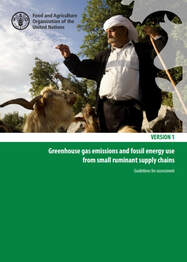 FOREWORD The methodology developed in these draft guidelines aims to introduce a harmonized international approach to the assessment of the environmental performance of small ruminant supply chains in a manner that takes account of the specificity of the various production systems involved. It aims to increase understanding of small ruminant supply chains and help improve their environmental performance. The guidelines are a product of the Livestock Environmental Assessment and Performance (LEAP) Partnership, a multi-stakeholder initiative whose goal is to improve the environmental sustainability of the livestock sector through better metrics and data. The small ruminant1 sector is of worldwide importance. It comprises a wide diversity of systems that provide a variety of products and functions. In 2011, sheep and goats produced more than 5 million tonnes of meat and 24 million tonnes of milk. Production has increased by 1.7 percent and 1.3 percent per year, respectively, during the past 20 years (FAO, 2013). This increase was driven mainly by developing countries in Africa and Asia. However, Oceania (mainly for meat) and Europe still contribute significantly to production. Production systems can vary from intensive systems, in which animals are partially or predominantly housed, to extensive systems that rely on grazing and native forages, and transhumance systems that involve large flock movements. Products are not restricted to meat and milk; sheep are also valued for their wool (more than 2 million tonnes of greasy wool was produced in 2011), and goats for their mohair and cashmere. Small ruminants also play a crucial role in sustaining livelihoods in traditional, small-scale, rural and family-based production systems. Across the small ruminant sector, there is strong interest in measuring and improving environmental performance. In the development of these draft guidelines, the following objectives were regarded as key:
These guidelines underwent a public review. The purpose of the review was to strengthen the advice provided and ensure it meets the needs of those seeking to improve performance through sound assessment practice. The present document is not intended to remain static. It will be updated and improved as the sector evolves and more stakeholders become involved in LEAP, and as new methodological frameworks and data become available. The development and inclusion of guidance on the evaluation of additional environmental impacts is viewed as a critical next step. The strength of the guidelines developed within the LEAP Partnership for the various livestock subsectors stems from the fact that they represent a coordinated cross-sectoral and international effort to harmonize measurement approaches. Ideally, harmonization will lead to greater understanding, transparent application and communication of metrics, and, importantly for the sector, real and measurable improvement in performance.
On 22 June at 15:00 CEST, the FAO’s Livestock Environmental Assessment and Performance (FAO LEAP) Partnership will be hosting the webinar Biodiversity and the livestock sector. Mitigating harms and maximizing benefits, on the occasion of the launch of new guidelines on biodiversity.
The event will kick off with the opening remarks by special guests. The LEAP Biodiversity Technical Advisory Group (TAG) leader, Tim McAllister, will present the guidelines. Following a panel discussion with representatives from governments, the private sector, and civil society, participants will have the opportunity to comment and ask questions. The 90-minute webinar welcomes all livestock stakeholders interested in environmental assessment, including representatives from governments private sector, non-governmental organizations, civil society, investment organizations, standardization bodies, academia, research and foundations. Register here: https://fao.zoom.us/webinar/register/WN_oKlc68VMToKsf3zQS9kmew Read more: http://www.fao.org/partnerships/leap/news-and-events/events/webinars/biodiversity-and-the-livestock-sector/en/ Agenda 15:00 - 15:05 – Welcome address 15:05 - 15:25 – Opening remarks 15:25 - 15:45 – Keynote presentation – Biodiversity and the livestock sector. Guidelines for quantitative assessment 15:45 - 16:05 – Panel discussion – Application of the FAO LEAP biodiversity guidelines 16:05 - 16:25 – Q&A 16:25 - 16:30 – Closing remark Livre des résumés, Réunion conjointe du Réseau FAO-CIHEAM, Meknès, Morocco, 23 - 25 October 20191/23/2020 Réunion conjointe du Réseau FAO-CIHEAM de Recherche et Développement sur les Ovins et les Caprins (sous-réseaux Nutrition et Systèmes de Production) et du sous-réseau FAO-CIHEAM de Recherche et Développement sur les Pâturages et Fourrages Méditerranéens
Efficience et résilience des ressources fourragères et de production de petits ruminants pour affronter les défis globaux dans la région méditerranéenne Ecole Nationale d’Agriculture de Meknès, Morocco, 23 - 25 October 2019 Joint Meeting of the FAO-CIHEAM Network for Research and Development in Sheep and Goats (Subnetworks on Nutrition and Production Systems) and the FAO-CIHEAM Subnetwork for the Research and Development of Mediterranean Pasture and Forage Resources
Efficiency and resilience of forage resources and small ruminant production to cope with global challenges in Mediterranean areas Ecole Nationale d’Agriculture de Meknès, Morocco, 23 - 25 October 2019 Concept Note 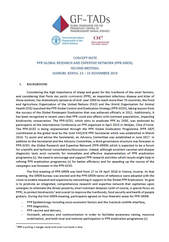 Download a copy of the Concept Notes Download a copy of the Concept Notes BACKGROUND Considering the high importance of sheep and goats for the livelihood of the small farmers, and considering that Peste des petits ruminants (PPR), an important infectious disease and killer of those animals, has dramatically spread as of mid- year 2000 to reach more than 70 countries, the Food and Agriculture Organization of the United Nations (FAO) and the World Organization for Animal Health (OIE) launched the PPR Global Control and Eradication Strategy (PPR-GCES), taking lessons from the success of the Global Rinderpest Eradication that was achieved officially in 2011. Additionally, it has been recognized in recent years that PPR could also affects wild ruminant populations, impacting biodiversity conservation. The PPR-GCES, which aims to eradicate PPR by 2030, was endorsed by participants at the International Conference on PPR organized in April 2015 in Abidjan, Côte d’Ivoire. The PPR-GCES is being implemented through the PPR Global Eradication Programme (PPR GEP) coordinated at the global level by the Joint FAO/OIE PPR Secretariat which was established in March 2016. To assist and advise the Secretariat, an Advisory Committee was established in June 2017. In addition to the Secretariat and the Advisory Committee, a third governance structure was foreseen in PPR-GCES: the Global Research and Expertise Network (PPR-GREN) which is expected to be a forum for scientific and technical consultations/discussions. Indeed, although excellent vaccines and disease diagnostic tests exist currently for immediate and effective implementation of PPR eradication programme (s), the need to encourage and support PPR research activities which results might help in refining PPR eradication programme (s) for better efficiency and for speeding up the course of the campaigns was foreseen in the PPR-GCES. READ MORE... Meknes, Morocco, 23-25 October 2019 The next Joint Meeting of the FAO-CIHEAM Network for Research and Development in Sheep and Goats (Subnetworks on Nutrition and Production Systems) and the FAO-CIHEAM Subnetwork for the Research and Development of Mediterranean Pasture and Forage Resources will take place in Meknes, Morocco, from 23 to 25 October 2019.
Participation is open to researchers, technicians, post-graduate students and other professionals working to improve the small ruminant sector and forage and pasture resources across Mediterranean countries and beyond. Click here to see the scientific sessions. |
IGA Blog
The International Goat Association promotes goat research and development for the benefit of humankind, to alleviate poverty, to promote prosperity and to improve the quality of life. Archives
May 2024
Categories
All
|
|
International Goat Association
2516 Millbrook Rd., Little Rock, AR72227 USA email: [email protected] -454-1641 |
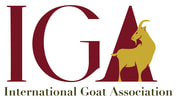
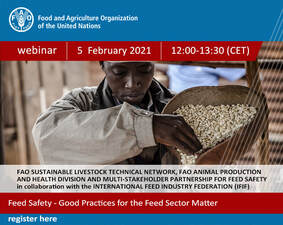
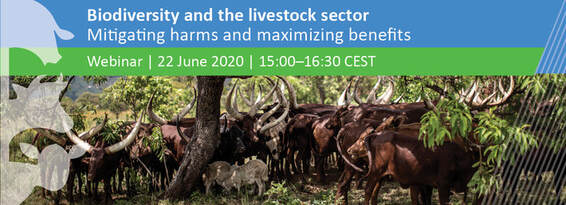
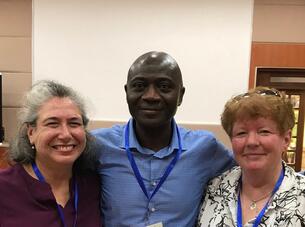
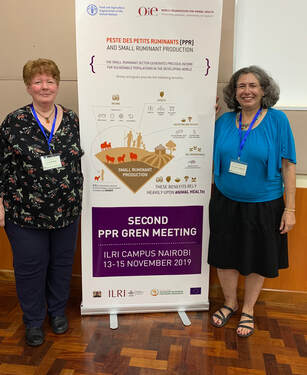
 RSS Feed
RSS Feed